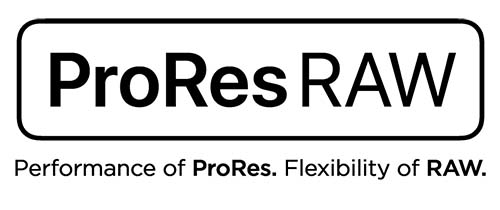Best Video Converter to Convert Apple ProRes to H.264 & Vice Versa
Macxvideo AI, a free video conversion tool supporting both H.264/HEVC and ProRes to let you convert Apple ProRes to H.264 and vice versa at will. Also compress 8K/4K files to 1080p in superfast speed and high quality.
Part 1. The Brief Introduction of ProRes vs H.264
#1. What is ProRes?
ProRes is a high quality, lossy video compression format developed by Apple for use in post-production that supports video resolution up to 8K. So, it gradually become the mainstream code for Hollywood movie production. Introduced in 2007 with Final Cut Studio 2, it is an unparalleled combination of multistream, real-time editing performance, impressive image quality, and reduced storage rates so that is very suitable for post-production, high quality and high performance. Besides, ProRes video codec is exclusive for iPhone Pro series, and as of now only iPhone 13 Pro or newer versions can record ProRes videos.
Apple ProRes includes the following formats: Apple ProRes 4444 XQ, Apple ProRes 4444, Apple ProRes 422 HQ, Apple ProRes 422, Apple ProRes 422 LT, Apple ProRes 422 Proxy.
ProRes vs ProRes Raw vs Raw
In 2018, Apple released ProRes Raw, the codec built upon the same technology as other ProRes codecs. ProRes Raw retains more original information than ProRes and has a higher data rate so that it is perfect for making HDR-standard videos. If ProRes codec is for Ultra HD 8K videos, ProRes Raw is born for HDR standard videos.
Well, what’s the difference between ProRes and Raw? Raw Formats are the untouched media that your video camera produces. Unlike ProRes videos, Raw videos are not encoded files. All the data of RAW is from camera sensor without any camera processing baked in. Besides, you can change camera settings like ISO, exposure, gamma, white balance and color space after your video is hot. So, ProRes Raw has the performance of ProRes and the flexibility of Raw.

#2. What is H.264?
Used by 91% of video industry developers as of September 2019, H.264 (AVC) video compression standard is an industry standard for video compression which mainly used as a delivery/distribution codec with much smaller file size. It is a network-friendly video transmission method that can deliver high-quality images without being a bandwidth hog. So, it is commonly used for recording, compression, streaming/distribution of video contents. To free up storage space of your devices, H.264 is still more suitable than Apple ProRes.
| Specs | ProRes | H.264 |
|---|---|---|
| Release date | 2007 | 2003 |
| Developer (s) | Apple Inc. | Video Coding Experts Group (VCEG) and Moving Pictures Export Group (MPEG) |
| Compression way | Intra-frame compression, low compression ratio | GOP (Group of Pictures) Processed Collectively, high compression ratio |
| Lossy/lossless | Lossy compression | Lossy compression |
| Container format (s) | Works with QuickTime Movie Format (MOV) | Works with Almost All Major Formats (MP4, M4P, M4V) |
| Video resolution | Mainly for 8K,now you can only record 4K | Mainly for 4K, up to 8K |
| Codec | 10-bit Codec | 8-bit Codec |
| Usage | Post-production | Video distribution/delivery |
Part 2. Detailed Analysis of Apple ProRes vs H.264
Here, we discard in-depth technologies about the two codecs that a paper could explain clearly, but give you easy words about what you are caring most, say which one is better.
#1. ProRes vs H.264: File Size
Winner: H.264
H.264 has high compression ratio making the file size is relatively smaller while Apple ProRes has low compression ratio making the files gigantic in size that further occupy a significant amount of space on a disk. The data rate of ProRes is higher than the normal video materials including H.264 files so bring about a lot of storage pressure as well. That’s why you need iPhone 13 Pro with at least 256GB storage to a record a 4K ProRes video, and that’s why Apple provides 1TB storage choice for iPhone users.
#2. ProRes vs H.264: Video Quality
Winner: Apple ProRes
Apple ProRes preserves a wider color gamut. Apple ProRes is a 10-bit codec that the ProRes files have more shades while working with Color Grading options in a post-production tool like iMovie, Clips, Final Cut Studio 2, Final Cut Pro X, Adobe Premier and Davinci Resolve. However, H.264 is an 8-bit codec which has fewer color grading options while working with post-production software. As far as we know, HDR offers brighter highlights, darker shadows and more details in both sides, but Apple ProRes supports HDR while H.264 doesn’t support it.
#3. ProRes vs H.264: Compatibility
Winner: H.264
Apple ProRes is a quite new video codec mainly designed for post-production, so that the supported devices or applications are countable. As of this article, there only a few devices, hardware or platforms support ProRes.
- Recorders: Arri Alexa, AJA (IO HD FireWire 800 interface; Ki Pro and Ki Pro Mini portable recorders, Ki Pro Rack and Ki Pro Ultra for 4K/UltraHD workflows), Atomos[19] (Ninja and Samurai recorders), Sound Devices (PIX series recorders), Convergent Designs (Odyssey7, 7Q, 7Q+), Fast Forward Video[20] (Sidekick recorder) HyperDeck SSD recorders, Blackmagic Cinema Camera, Odyssey7 and Odyssey7Q monitor/recorders, Atomos Shogun, AJA CION production camera, Blackmagic UrsaMini 4.6k, Blackmagic Pocket Cinema Camera 4K, iPhone, etc.
- Encoders: iMovie, Clips, Final Cut Studio 2, Final Cut Pro X, Adobe Premier, Davinci Resolve, QuickTime (using the "Maximum" quality setting when producing a Movie Recording), etc.
- Video hosting sites: YouTube.
- Media Player: VLC Media Player, QuickTime Player (need to download Apple ProRes QuickTime decoder for Windows and Mac).
As for H.264, you can find it nearly everywhere. H.264 touches every aspects of our digital lives and its popularity is growing continuously. You can find it in HD DVDs, HDTV, pay-TV, YouTube videos, Blu-ray discs, videos from Netflix, Hulu, Vimeo, iTunes Store, Amazon Prime Video, etc. You can also find it in CCTV and Video Surveillance markets. Since iPhone 6S Plus, all newer iPhone models support H.264 video codec.
#4. ProRes vs H.264: Encoding
Winner: ProRes
Apple ProRes uses I-Frame approach. All ProRes codecs are frame-independent codecs that each frame is encoded and decoded independently of any other frame. That leads to a faster rendering speed, 5.7 times the R3D 3:1, 4.1 times the R3D5:1, and 1.5 times the Canon's new compressible RAW . That’s the reason ProRes files are big. However, ProRes files are loosely compressed, so they don’t require much GPU to de-compress the information.
H.264 uses GOP (Group of Pictures) Approach. H.264 codec compresses a group of pictures to form a complex architecture that, even though it reduces the overall file size, requires more inputs from GPU to decompress and process while processing.
#5. ProRes vs H.264: Other Advantages & Disadvantages
ProRes:
- ProRes helps make iPhone series and newer iPhone models more professional in terms of recording cinematic videos.
- ProRes is a bandwidth intensive format because of its large file size.
- If you use ProRes coding format when editing your videos, you can export your videos with a faster speed.
H.264:
- H.264 is more suitable for the majority of people who only need videos up to 4K.
- H.264 is more economical. The service providers and common people can use the existing wires and infrastructure for long-distance transmission. Because H.264 video is standard based, it provides a vendor agnostic video extension solution that users can mix and match H.264 equipment from different vendors without worry of any compatibility or proprietary issues.
- H.264 is a network-friendly video transmission method that delivers high-quality images without being a bandwidth hog.
- H.264 lets you stream video from an encoder to multiple decoders simultaneously. For example, you can stream one set of video signals to a display, a video wall and a digital signal system at the same time.
Part 3. Comparison Conclusion – Which One Should You Choose
H.264 is for video distribution/delivery purposes, while ProRes is for post-production. That said, if you just need to do a simple edit or just play a video, you can go with H.264 codec, but if you plan to do a heavy edit with lots of transitions, effects, layers and color grading, you will be best served by Apple ProRes.
External sources:








